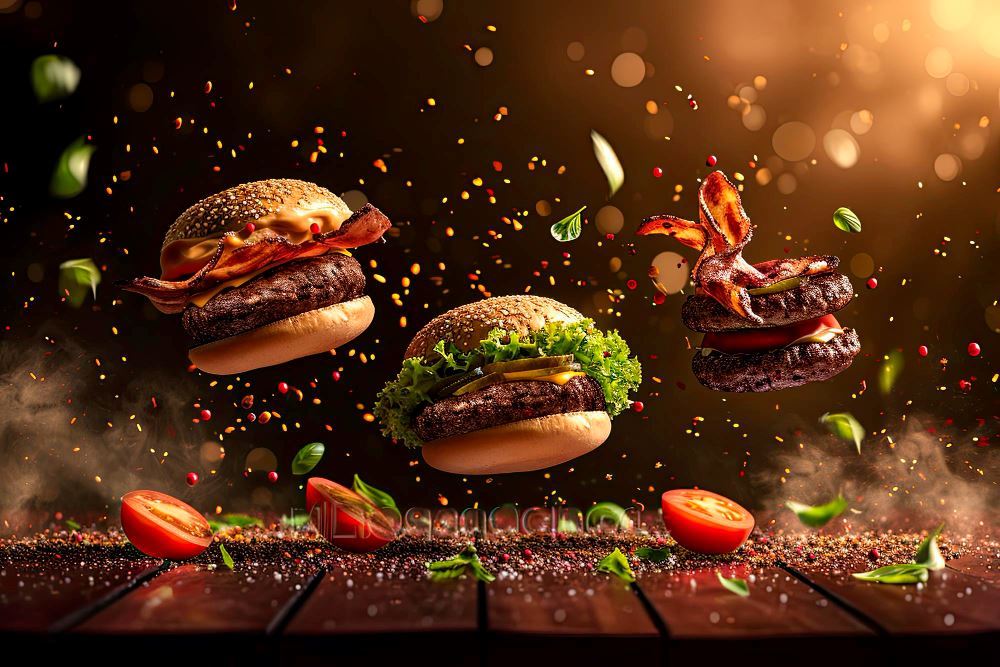It is easy to make a delicious-looking hamburger at home.
But would this hamburger still look delicious after it sat on your kitchen table under very bright lights for six or seven hours?
If someone took a picture or made a video of this hamburger after the seventh hour, would anyone want to eat it?
More importantly, do you think you could get millions of people to pay money for this hamburger?
These are the questions that fast-food companies worry about when they produce commercials or print ads for their products.
Video and photo shoots often last many hours. The lights that the photographers use can be extremely hot. These conditions can cause the food to look quite unpleasant to potential consumers.
Because of this, the menu items that you see in fast food commercials are probably not actually edible.

Let’s use the hamburger as an example.
The first step towards building the perfect commercial hamburger is the bun.
The food stylist—a person employed by the company to make sure the products look perfect—sorts through hundreds of buns until he or she finds one with no wrinkles.
Next, the stylist carefully rearranges the sesame seeds on the bun using glue and tweezers for maximum visual appeal.
The bun is then sprayed with a waterproofing solution so that it will not get soggy from contact with other ingredients, the lights, or the humidity in the room.
Next, the food stylist shapes a meat patty into a perfect circle.
Only the outside of the meat gets cooked—the inside is left raw so that the meat remains moist.
The food stylist then paints the outside of the meat patty with a mixture of oil, molasses, and brown food coloring.
Grill marks are either painted on or seared into the meat using hot metal skewers.
Finally, the food stylist searches through dozens of tomatoes and heads of lettuce to find the best-looking produce.
One leaf of the crispest lettuce and one center slice of the reddest tomato are selected and then sprayed with glycerin to keep them looking fresh.
So, the next time you see a hamburger in a fast-food commercial, you must remember that you’re actually looking at glue, paint, raw meat, and glycerin!